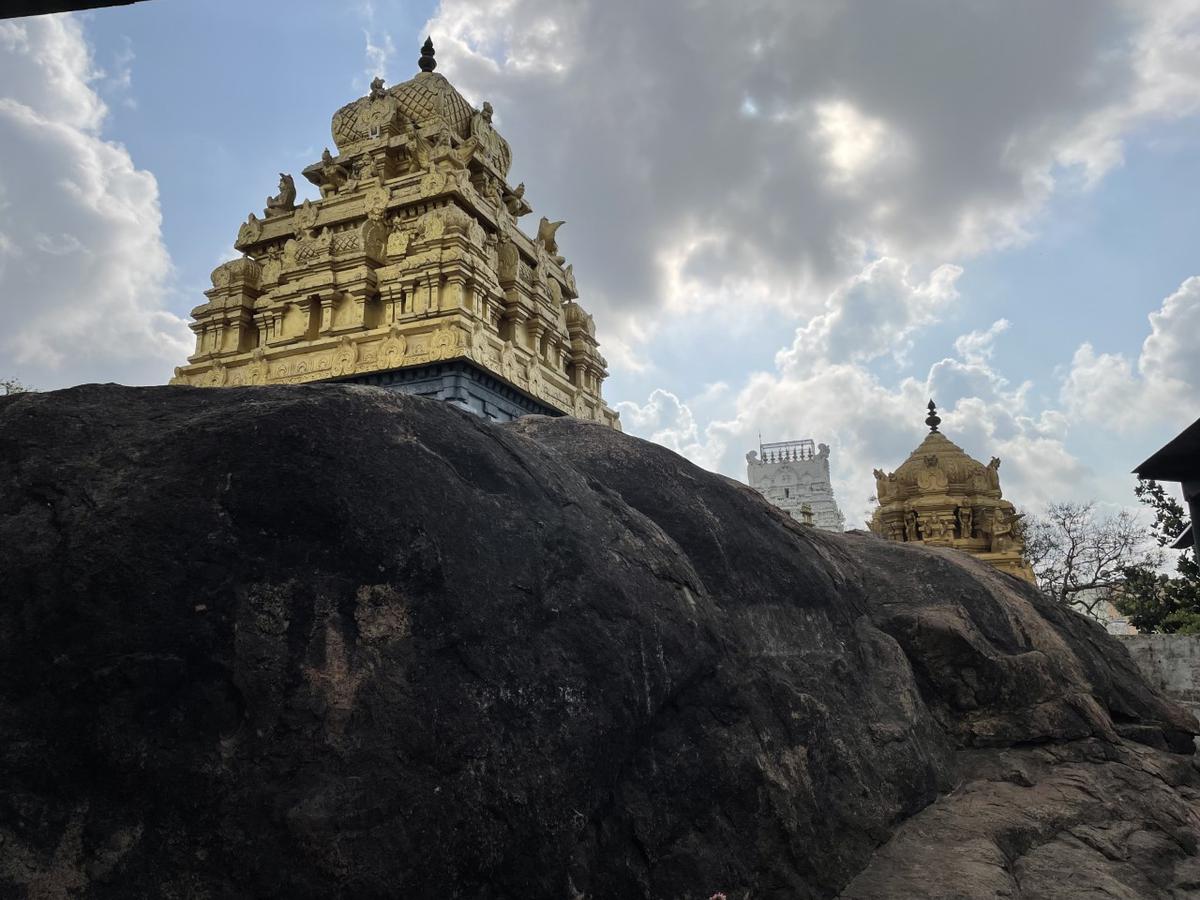Context
-
Singaperumal Koil, located around 45 km from the city, has an ancient cave shrine to Narasimha.
-
Singaperumal Koil, dating back to the Pallava period, is among the country’s well-known cave temples
About Singaperumal Koil
- Sengundram, as the name indicates, means red hill and it refers to Singaperumal Koil. Though the hillock now appears black, it seems to have once been of reddish hue.
- The name in Sanskrit is Patala (red) Adri (hill). In the Chola period the area was known as Sengundra Nadu, which was part of Kalattur Kottam.
- The sanctum at Singaperumal Koil is built around the large carved Narasimha, attributed to the Pallavas and dating to around the eighth century.

Photo Credit: Special Arrangement (The Hindu) - The open-mouthed idol that fills the entire space reminds of verse 23 of Andal’s Thiruppavai, where she describes the way a lion wakes up, stretches, roars, and then emerges from its cave.
- The regular processional icon, known as Prahlada Varada, is an icon of Vishnu flanked by consorts.
- On either side of the Narasimha sanctum are shrines to Ahobilavalli, Andal, Lakshmi Narasimha and Vishwaksena. All of these, including the Narasimha sanctum, open to a common mandapa whose pillars belong to the Chola period. Surviving inscriptions reveal that the deity here was known as Narasinga Vinnagar Deva or Azhwar.
- The earliest such writings here pertain to the era of Raja Raja I (r 985-1014AD) and speak of local rather than royal patronage. A unique feature in this pavilion is the motif of the Kurma Avatara of Vishnu on the ceiling — there are several tortoises and depictions of Rahu trying to swallow the sun and the moon.
- The temple received support also from the Vijayanagar and Nayak kings.
- A four-pillared mandapa, with the Dasavatara carved on it, seems to be of late 18th or early 19th century origin, and is situated a little before the entrance.
- A stone deepasthamba fronts the flagstaff of the temple, indicating its Vijayanagara origins.
- By the time of the East India Company and the British Raj, Singaperumal Koil seems to have received patronage from the community of Arya Vaisyas, who became prosperous as middlemen and translators.
Reference:
Visit Abhiyan PEDIA (One of the Most Followed / Recommended) for UPSC Revisions: Click Here
IAS Abhiyan is now on Telegram: Click on the Below link to Join our Channels to stay Updated
IAS Abhiyan Official: Click Here to Join
For UPSC Mains Value Edition (Facts, Quotes, Best Practices, Case Studies): Click Here to Join
